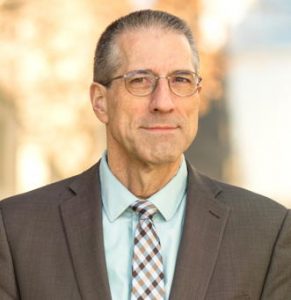IN REVIEW: NUTCRACKER MEETS KAUFFMAN
OLD WINE IN NEW BOTTLES: KC BALLET PRESENTS FINE ‘NUTCRACKER’ IN KAUFFMAN CENTER
The production of The Nutcracker that the late Todd Bolender created for the Kansas City Ballet is 30 years old this year, but at the opening performance on the afternoon of December 3rd it had a bright new look. That’s partly because it was being presented for the first time in the Kauffman Center’s state-of-the-art Muriel Kauffman Theatre, after languishing in decrepit downtown halls since 1981. But it’s also because the sets and costumes by Robert Fletcher “pop” with the aid of both a higher proscenium arch (which allows us to see more of the brightly-hued borders of Act 2) and meticulous lighting by New York-based Kirk Bookman, who has done wonderful work in recent years for the Ballet’s productions. The result was not just the traditional holiday favorite, but a fresh look at some of the best dancing our company can do, in choreography that traces its roots all the way back to Mother Russia – but that also contains fresh, original elements from New York City Ballet’s George Balanchine (who danced the piece in Russia as a boy) and former Balanchine dancer Bolender.
The brilliance of this Nutcracker is that in addition to allowing the professional company a chance to strut its stuff, it also makes room for nearly 200 students from the Ballet School and elsewhere, under the sharp tutelage of artistic director William Whitener, ballet master James Jordan, ballet mistress Karen Brown, school director Peter Pawlyshyn and others. On Saturday the new theater seemed to inspire exceptional performances from nearly everyone, beginning with Kimberly Cowen, who gave an authentic and exquisitely detailed rendering of the Sugar Plum Fairy, aided by the solid support of her Cavalier, handsome Luke Luzicka. Their Grand Pas in Act 2 included a delightful tarantella (Cavalier) and coda (Cavalier and Fairy) that had been cut from the KC Ballet’s Nutcracker for nearly a decade, whose reinstatement had the effect of making the ending feel a bit less abrupt than it has in the past.
Logan Pachciarz presented the mysterious Herr Drosselmeyer as if channeling a cheerful Gandalf-like magician. The Party Scene moved along with precision as usual, and included tight performances by Nadia Iozzo and Michael Davis as the Mechanical Dolls (and a bit of disco hamming by Michael Eaton as the Grandfather). Young Oscar Miller was an especially feisty Fritz, and in the Battle Scene, Yoshiya Sakurai was the hyperactive Nutcracker. Rachel Coats was a limpid Snow Queen, supported by Gabriel Davidsson as her King. Here as elsewhere, newly vivid spotlights heightened the effect of the solos.
Standouts in Act 2 included the graceful, accomplished Emma Lane as Clara, and Wilfred Rowland as the Nephew/Prince, a forthright young man who danced with gentle poise and performed his famous Pantomime with a kind of youthful boisterousness. (Madeline Young-Brown and Sterling Jennings perform these roles in the alternate cast.) Caitlin Mack and Charles Martinwere an energetic couple in the Spanish Dance, Aisling Hill-Connor was aptly sultry for the Arabian Dance (with powerful assistance by Marcus Oatis), and Yoshiya Sakurai was convincing in the Chinese Dance. Assertive Marty Davis led the Russian Dance, and Laura Wolfe sparkled in the Dance of the Reed Pipes. The Waltz of the Flowers (my favorite number) was danced with casual accuracy by Kaleena Burks, company members, and dancers from the Ballet School and UMKC Conservatory of Music and Dance.
Of course a central element of The Nutcracker is Tchaikovsky’s peerless score, and the Kansas City Symphony Ballet Orchestra, led by music director Ramona Pansegrau, performed with energy and, for the most part, accuracy. One had the impression that there were too few stringed instruments in the pit, with the result that the winds and brass often dominated the texture. This may well be the same-sized string complement used in previous years, but the oddities of the acoustics of the Music Hall and the Midland Theatre, where The Nutcracker used to be held, did not always permit a reasonable assessment of the results. This new theater, whose acoustics are problematic but undoubtedly vivid, amplifies – exacerbates – any imperfections of sound coming from the pit, as we have already learned from several performances in the Muriel Kauffman Theatre. (It also amplified, rather dramatically, the more-than-a-stage-whisper conversations that were going on all over the theater throughout the performance.) It will take some time for all of us to adjust to the Kauffman Center and its quirks and vicissitudes.
A footnote: Following a trend that other performing-arts groups have tracked this season, 2011 is a record-breaking year for the Ballet’s Nutcracker. As of this writing, the company had sold $1.31 million in tickets, an all-time high and a dramatic jump from the previous record of $1 million in 2001.
The Nutcracker runs through December 24th. For tickets call 816-931-2232 or go to www.kcballet.org.






